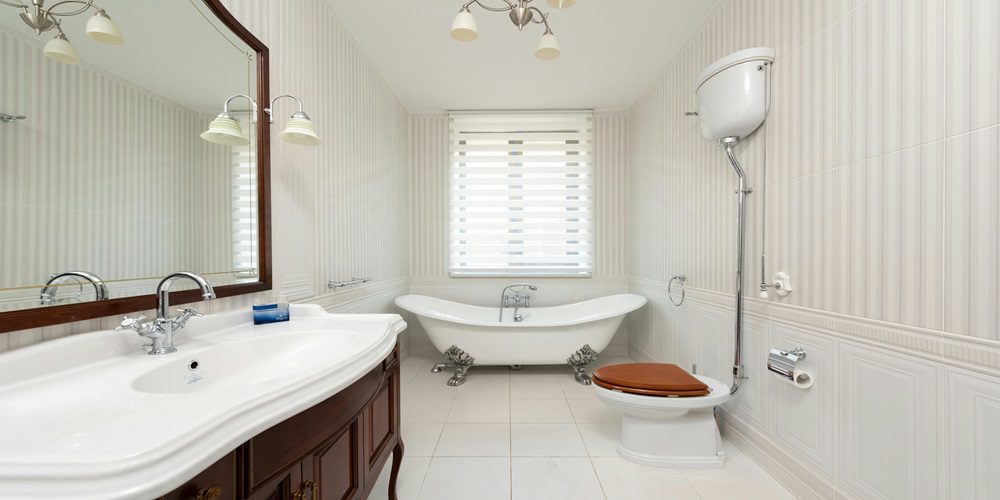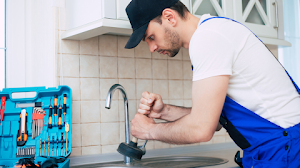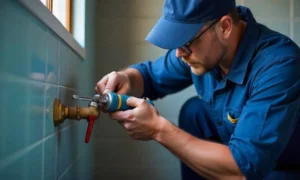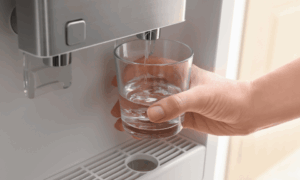Are you tired of dealing with leaky faucets, clogged drains, and other plumbing problems in your home? Look no further! In this blog post, we will explore some of the most common plumbing issues homeowners face and provide simple solutions to help you fix them quickly and easily. Say goodbye to expensive plumber bills and hello to a smoothly running plumbing system!
Introduction to Plumbing Issues
Plumbing issues are a common problem that many homeowners face. From a dripping faucet to a clogged drain, these issues can be frustrating and inconvenient. However, it’s important to address them quickly as they can lead to more serious problems if left unchecked.
One of the most common plumbing issues is a leaky faucet. This may seem like a minor problem, but it can waste gallons of water and result in higher water bills. The most common cause of a leaky faucet is a worn-out washer or O-ring. These are inexpensive parts that can easily be replaced by yourself with the proper tools.
Plumbing issues may seem like a nuisance, but they should not be ignored. It’s essential to address them promptly to avoid more significant problems and potential costly repairs in the future. In the following sections, we will discuss how you can fix some of these common plumbing issues yourself or when it’s necessary to call a professional plumber for assistance.
Clogged Drains: Causes and DIY Solutions
Clogged drains are a common plumbing issue that can cause major inconvenience and even damage to your home if not addressed promptly. In this section, we will discuss the causes of clogged drains and provide some DIY solutions to help you tackle this problem.
Causes of Clogged Drains:
1. Accumulation of debris: The most common cause of clogged drains is the build-up of debris such as hair, soap scum, food particles, and grease. These substances can stick to the walls of pipes and quickly accumulate over time, leading to a blockage.
2. Tree roots: If you have trees in your yard, their roots can grow towards your underground plumbing system in search of water. This can result in root intrusion, where the roots penetrate through small cracks or joints in the pipes, causing blockages.
3. Improper disposal of waste: Flushing items like wet wipes, paper towels, feminine hygiene products or pouring cooking grease down the drain instead of disposing them properly can also contribute to clogs.
4. Pipe corrosion: As pipes age, they may corrode from constant exposure to water and other chemicals running through them. This corrosion can create rough surfaces inside the pipes that trap debris as it passes through.
5. Poor pipe installation: Pipes that are not properly installed may have incorrect gradients or improper joint connections which can lead to frequent clogging.
DIY Solutions for Clogged Drains:
1.Routine cleaning: Regularly clean your drains with a mixture of baking soda and vinegar followed by hot water to prevent build-up before it becomes an issue.
2.Hot water flush: Boil a kettle full of water and slowly pour it down your drain once a week to help dissolve any oil build-ups.
3.Plunger: A plunger can be highly effective in dislodging minor blockages caused by accumulated debris or small objects stuck in the pipe.
4.Snake/Auger tool: If a plunger does not work, using a plumbing snake or auger can help break up and clear more stubborn clogs in the pipes.
5.Enzyme cleaners: Commercial enzyme-based drain cleaners can be used to break down organic matter that causes blockages. However, they may take longer to work but are an eco-friendly alternative to harsh chemicals.
6.Hire a professional plumber: If the above solutions do not work or if you suspect a serious issue like root intrusion or pipe corrosion, it is best to seek professional help.
Clogged drains can be caused by various factors such as accumulated debris, tree roots, improper waste disposal, and poor pipe installation. Regular maintenance and proper use of DIY solutions can prevent minor clogs from becoming major issues. However, if you encounter persistent clogging problems, it is best to consult a professional plumber for further assistance.
Leaky Faucets: Quick Fixes and Prevention Tips
Leaky faucets are one of the most common plumbing issues that homeowners face. Not only can they be annoying with the constant dripping sound, but they can also waste a significant amount of water and increase your utility bills. Fortunately, there are quick fixes and prevention tips that can help you solve this problem and keep your faucets in good condition.
Quick Fixes:
1. Check the Washer: The most common cause of a leaky faucet is a worn-out washer. To fix this issue, turn off the water supply to the faucet and remove the handle with a screwdriver. Then, take out the valve stem and replace the old washer with a new one before reassembling everything back together.
2. Tighten Connections: Sometimes, loose connections between the spout and base or handle and spout can create leaks. Use an adjustable wrench to tighten these connections gently without applying too much force.
3. Clean Aerator: Over time, debris and mineral deposits may build up inside your faucet’s aerator, causing low water pressure or leakage from its tip. Unscrew it using pliers or by hand if possible and soak it in white vinegar for 30 minutes before scrubbing it clean with a small brush.
4. Replace O-Rings: Similar to washers, o-rings located on cartridge-based faucets may wear out over time causing leaks around tap handles while they’re engaged even after being tightened securely into place—replace them as needed to seal these gaps effectively.
Prevention Tips:
1. Regular Maintenance: Prevention is always better than cure when it comes to plumbing issues like leaky faucets. Make sure to perform routine maintenance tasks such as cleaning aerators and replacing washers regularly to avoid any potential leaks.
2. Don’t Over-Tighten Handles: While tightening loose handles is essential for quick fixes, be careful not to overtighten them as this could lead to damage in internal parts and cause more leaks.
3. Keep Valves Open: Turning off your water supply completely when you’re away for an extended period could cause pressure to build up inside the plumbing system, leading to leaks once you turn it back on. To avoid this, keep some faucets open with slight drips during your absence to maintain a steady flow of water and prevent pressure building up.
Running Toilets: Troubleshooting Steps and Repair Techniques
Running toilets are not only an inconvenience, but they can also lead to wasted water and costly utility bills. Having a constantly running toilet is a common plumbing issue that can be caused by several factors such as a faulty flapper, incorrect water level in the tank, or a damaged fill valve. In this section, we will go through some troubleshooting steps and repair techniques to help you address this problem.
Step 1: Check the Flapper
The flapper is located at the bottom of the toilet tank and is responsible for controlling the flow of water from the tank to the bowl. If it is not sealing properly or has become damaged or worn out, it can cause your toilet to run continuously. To check if this is the source of your running toilet, remove the lid from the tank and lift up on the flapper arm. If the running stops, then you know that you need to replace your flapper.
Step 2: Adjust Water Level in Tank
If your flapper seems to be working fine, then it’s time to check the water level in your toilet tank. When there is too much water in the tank, it can cause continuous running as excess water spills into the overflow pipe. To fix this issue, adjust the float inside your tank until it sits below the top of your overflow tube.
Step 3: Test Fill Valve
Another possible culprit for a running toilet could be a faulty fill valve. First, turn off your water supply and flush your toilet. Then listen for any hissing noises coming from inside your tank – this indicates that your fill valve needs to be replaced.
Step 4: Clean or Replace Parts
One of the most effective ways to troubleshoot a running toilet is by cleaning or replacing various parts within your toilet tank. This includes components like rubber seals and gaskets which can become dirty or worn out over time due to mineral build-up or age.
Step 5: Call a Professional
If none of the above steps seem to fix your running toilet, it might be time to call in a professional plumber. They will have the necessary expertise and tools to diagnose and repair any issues with your toilet that may be causing it to run continuously.
Low Water Pressure: Identifying the Source and Possible Solutions
Low water pressure is a common household plumbing issue that can be frustrating and inconvenient. It can disrupt daily tasks such as taking a shower or doing the dishes, leading to an overall decline in the quality of life. However, before tackling this problem, it is important to understand its source and potential solutions.
Identifying the source of low water pressure is crucial in finding a solution. The first step would be to check if the low water pressure is isolated to just one faucet or if it affects multiple fixtures in your home. If it only affects one faucet, then there may be an issue with the aerator or cartridge inside that specific fixture. These components can become clogged with debris over time, reducing water flow. Cleaning or replacing them may solve the problem.
On the other hand, if low water pressure is experienced throughout your home, then there may be a larger issue at play. One possibility could be an old and corroded main water supply line coming into your house from the street. Over time, these pipes can become restricted, causing a decrease in water pressure throughout your plumbing system.
Another potential cause for low water pressure could be hidden leaks within your plumbing system. These leaks can often go unnoticed for extended periods of time but result in decreased water flow and increased utility bills. To check for these leaks, you can turn off all faucets and appliances that use water in your home and observe your meter for any changes in readings.
Once you have identified the source of the low water pressure, you can explore possible solutions to fix it. If it is due to clogged pipes or fixtures, regularly cleaning them or installing new ones should help improve water flow. In cases where aging pipes are causing restrictions to your main supply line, professional intervention may be necessary to replace them.
In addition to these solutions, investing in a booster pump can also help increase overall household water pressure. This device works by taking incoming low-pressure stream and pressurizing it before it reaches your faucets and appliances.
Low water pressure can be a frustrating plumbing issue, but with the right knowledge and approach, it can be easily identified and resolved. By understanding its source and considering potential solutions such as cleaning fixtures or installing a booster pump, you can enjoy adequate water flow throughout your home once again. It is always recommended to seek professional help for complex plumbing issues to ensure proper diagnosis and resolution.
Burst Pipes: How to Handle this Emergency Situation
Burst pipes are one of the most common and damaging plumbing issues that can occur in any household. They can cause significant water damage, resulting in costly repairs and inconvenience to homeowners. In this section, we will discuss how to handle this emergency situation.
The first step when dealing with a burst pipe is to immediately shut off the main water supply to your house. This valve is typically located near the water meter or where the main water line enters your home. By turning off the main valve, you will stop the flow of water and prevent further damage from occurring.
Once you have turned off the main valve, it is essential to drain all remaining water from the pipes by opening all taps and flushing toilets. With no incoming water supply, this will help reduce pressure in the pipes and prevent further leaking or bursting.
Next, assess the extent of the damage caused by the burst pipe. If it has caused significant leaks or flooding, it is crucial to call a professional plumber immediately for assistance. They will have specialized equipment and knowledge to repair or replace the damaged pipe safely.
If you feel confident in tackling the issue yourself, turn on your faucet before proceeding to relieve any pressure inside your plumbing system gently. Then locate where exactly on the burst pipe needs repair or replacement.
For small cracks or holes in visible pipes, quick temporary fixes such as epoxy putty or rubber patches can be used until a permanent solution can be made by a professional plumber.
However, if there are extensive damages that require replacing large sections of piping, calling an experienced plumber would be best advised as they will have access to specialized tools required for such tasks.
In cases where freezing temperatures caused pipes to burst during winter months, thawing them out with hot towels can often help restore their shape temporarily until a plumber arrives for proper repairs.
Prevention is always better than cure; regular maintenance checks on your plumbing system are essential in preventing burst pipes from happening altogether. Look for warning signs of corrosion or rust on pipes and call a professional plumber to replace them before they burst.
Alternatives to DIY Fixes and When to Call a Professional Plumber
While DIY approach might seem like a cost-effective and quick solution for plumbing issues, there are certain problems that require the expertise of a professional plumber. In this section, we will discuss some alternatives to DIY fixes and when it is best to call in a professional for help.
1. Clogged Drains: One of the most common plumbing problems faced by homeowners is clogged drains. While using drain cleaners or plungers can usually do the trick, there are times when these methods fail to clear the blockage completely. In such cases, it’s best to avoid using harsh chemicals and instead call a plumber who can use specialized tools like drain snakes or hydro jetting equipment to effectively unclog your drains without causing any harm to your pipes.
2. Low Water Pressure: A sudden drop in water pressure could be caused by various factors such as mineral buildup inside the pipes or even leaks in the main water line. These issues require special tools and skills that only a professional plumber possesses. Attempting to fix them yourself could lead to further damage and end up costing you more in repair expenses.
3. Burst Pipes: Burst pipes are not only messy but also pose a serious threat to your property due to potential water damage. This is definitely not something you should handle yourself as it requires immediate attention from a licensed plumber who has experience dealing with emergencies like this.
4. Gas Leaks: Gas leaks can be extremely dangerous and if not taken care of immediately, they could result in explosions or carbon monoxide poisoning. If you suspect a gas leak in your home, do not attempt any repairs on your own and instead call an emergency plumbing service right away.
5. Extensive Renovation Projects: While minor renovations such as changing faucets or installing new fixtures can be easily done by yourself, extensive projects that involve rerouting pipelines or installing new plumbing systems should always be left to the professionals. They have the necessary skills and knowledge required to ensure that everything is installed correctly and up to code.
Conclusion
In conclusion, plumbing issues are inevitable but they don’t have to be a major headache. By following these tips and being aware of common problems, you can easily troubleshoot and fix any minor plumbing problem that may arise in your home. Remember to always take safety precautions when dealing with water and if the issue seems too complex, it’s always best to call a professional plumber for help. With a little bit of knowledge and preparation, you can keep your plumbing system running smoothly and efficiently.



































